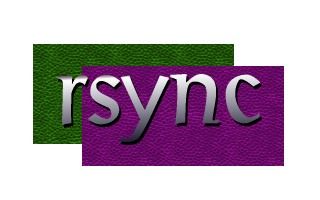 Vedremo (completo di tutti i passi) la sincronizzazione di file/cartelle su un client linux da un server linux, over ssh con autenticazione tramite chiave RSA e senza bisogno dell’ inserimento della password in modo che si potrebbe pensare ad uno script bash da inserire in cron per poter effettuare una sincronizzazione/backup temporizzata (argomento che non verrà trattato in questo articolo):
Vedremo (completo di tutti i passi) la sincronizzazione di file/cartelle su un client linux da un server linux, over ssh con autenticazione tramite chiave RSA e senza bisogno dell’ inserimento della password in modo che si potrebbe pensare ad uno script bash da inserire in cron per poter effettuare una sincronizzazione/backup temporizzata (argomento che non verrà trattato in questo articolo):
Configurazione Client Side
1) generare la chiave rsa (ipotizziamo un utente dal nome “user” presente sulla macchina client):
cd /home/user mkdir .ssh cd .ssh ssh-keygen -t rsa # ( -t specifica il tipo di chiave da creare)
dopo aver battuto invio ci verranno effettuate alcune domande, ovvero:
Generating public/private rsa key pair: Enter file in which to save the key (/home/user/.ssh/id_rsa):
premiamo invio per lasciare il path di default
Enter passphrase (empty for no passphrase):
battiamo semplicemente invio:
Enter same passphrase again:
ancora una volta battiamo invio, e avremo in output una cosa del genere:
Your identification has been saved in /home/user/.ssh/id_rsa Your public key has been saved in /home/user/.ssh/id_rsa.pub The public key fingerprint is: 00:3b:15:09:d4:f6:d2:f1:5d:45:de:82:43:67:16:01 user@hostname
adesso all’interno della cartella /home/user/.ssh , troveremo questi file:
$ ls id_rsa id_rsa.pub
adesso tramite scp copiamo la nostra chiave pubblica sul server:
$ scp id_rsa.pub utente_server@INDIRIZZO_IP_SERVER:/home/utente_server/.ssh
Configurazione Server Side
cd /home/utente_server/.ssh cat id_rsa.pub > authorized_keys #consiglio: controllate sempre i permessi, altrimenti: chown utente_server:gruppo authorized_keys chmod 600 authorized_keys
Configurazione demone SSH per autorizzazione senza upassword ma con chiave RSA
di seguito troverete un file sshd_config (/etc/ssh/sshd_config) configurato per permettere la connessione che noi vogliamo (tutti i paramentri come listenaddress, porte e via scorrendo sono stati lasciati di default appositamente, l’utente configurerà questi parametri a seconda delle proprie esigenze:
(da utente root)
$ nano /etc/ssh/sshd_config
######################################################################### # $OpenBSD: sshd_config,v 1.73 2005/12/06 22:38:28 reyk Exp $ # This is the sshd server system-wide configuration file. See # sshd_config(5) for more information. # This sshd was compiled with PATH=/usr/local/bin:/bin:/usr/bin # The strategy used for options in the default sshd_config shipped with # OpenSSH is to specify options with their default value where # possible, but leave them commented. Uncommented options change a # default value. Port 22 #Protocol 2,1 Protocol 2 #AddressFamily any #ListenAddress 0.0.0.0 #ListenAddress :: # HostKey for protocol version 1 #HostKey /etc/ssh/ssh_host_key # HostKeys for protocol version 2 #HostKey /etc/ssh/ssh_host_rsa_key #HostKey /etc/ssh/ssh_host_dsa_key # Lifetime and size of ephemeral version 1 server key #KeyRegenerationInterval 1h ServerKeyBits 1024 # Logging # obsoletes QuietMode and FascistLogging #SyslogFacility AUTH SyslogFacility AUTHPRIV #LogLevel INFO # Authentication: #LoginGraceTime 2m PermitRootLogin no <-------- NON VIENE PERMESSO IL LOGIN COME UTENTE ROOT #StrictModes yes #MaxAuthTries 6 RSAAuthentication yes <------- ABILITA L'AUTENTICAZIONE RSA PubkeyAuthentication yes <------- ABILITA L'AUTENTICAZIONE CON CHIAVE PUBBLICA AuthorizedKeysFile .ssh/authorized_keys <---- CARTELLA FILE authorized_keys # For this to work you will also need host keys in /etc/ssh/ssh_known_hosts RhostsRSAAuthentication no # similar for protocol version 2 #HostbasedAuthentication no # Change to yes if you don't trust ~/.ssh/known_hosts for # RhostsRSAAuthentication and HostbasedAuthentication #IgnoreUserKnownHosts no # Don't read the user's ~/.rhosts and ~/.shosts files #IgnoreRhosts yes # To disable tunneled clear text passwords, change to no here! #PasswordAuthentication yes #PermitEmptyPasswords no PasswordAuthentication no <----- DISABILITA L'AUTENTICAZIONE TRAMITE PASSWORD # Change to no to disable s/key passwords #ChallengeResponseAuthentication yes ChallengeResponseAuthentication no # Kerberos options #KerberosAuthentication no #KerberosOrLocalPasswd yes #KerberosTicketCleanup yes #KerberosGetAFSToken no # GSSAPI options #GSSAPIAuthentication no GSSAPIAuthentication no #GSSAPICleanupCredentials yes GSSAPICleanupCredentials yes # Set this to 'yes' to enable PAM authentication, account processing, # and session processing. If this is enabled, PAM authentication will # be allowed through the ChallengeResponseAuthentication mechanism. # Depending on your PAM configuration, this may bypass the setting of # PasswordAuthentication, PermitEmptyPasswords, and # "PermitRootLogin without-password". If you just want the PAM account and # session checks to run without PAM authentication, then enable this but set # ChallengeResponseAuthentication=no #UsePAM no UsePAM yes # Accept locale-related environment variables AcceptEnv LANG LC_CTYPE LC_NUMERIC LC_TIME LC_COLLATE LC_MONETARY LC_MESSAGES AcceptEnv LC_PAPER LC_NAME LC_ADDRESS LC_TELEPHONE LC_MEASUREMENT AcceptEnv LC_IDENTIFICATION LC_ALL #AllowTcpForwarding yes #GatewayPorts no #X11Forwarding no X11Forwarding yes #X11DisplayOffset 10 #X11UseLocalhost yes #PrintMotd yes #PrintLastLog yes #TCPKeepAlive yes #UseLogin no #UsePrivilegeSeparation yes #PermitUserEnvironment no #Compression delayed #ClientAliveInterval 0 #ClientAliveCountMax 3 #ShowPatchLevel no #UseDNS yes #PidFile /var/run/sshd.pid #MaxStartups 10 #PermitTunnel no #ChrootDirectory none # no default banner path #Banner /some/path # override default of no subsystems Subsystem sftp /usr/libexec/openssh/sftp-server #########################################################################
Sincronizzazione
questa è la parte “meno faticosa” poichè consiste in un unico comando:
rsync -avz -e ssh utente_server@INDIRIZZO_IP_SERVER:/directory_server /directory_locale
andiamo ad illustrare le opzioni passate a questo comando, nel particolare:
-avz : trasferisce ricorsivamente tutti i file dall directory_server alla
directory_locale. Cosa interessante e che i file vengono trasferiti
in una modalità che si chiama "archive", essa assicura che link simbolici,
device, attributi, permessi, proprietari siano preservati durante il
trasferimento, in più essi vengono compressi in modo da ridurre la
dimensione dei file da trasferire.
-e : viene specificato la shell remota da utilizzare
Un saluto,
Giovanni Uccio




